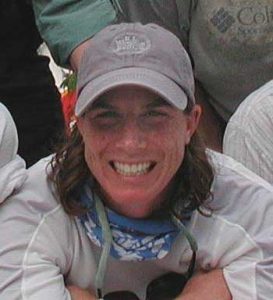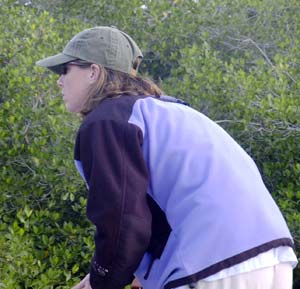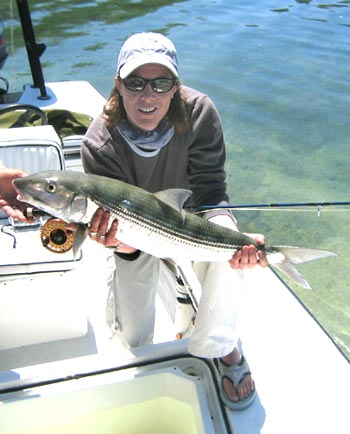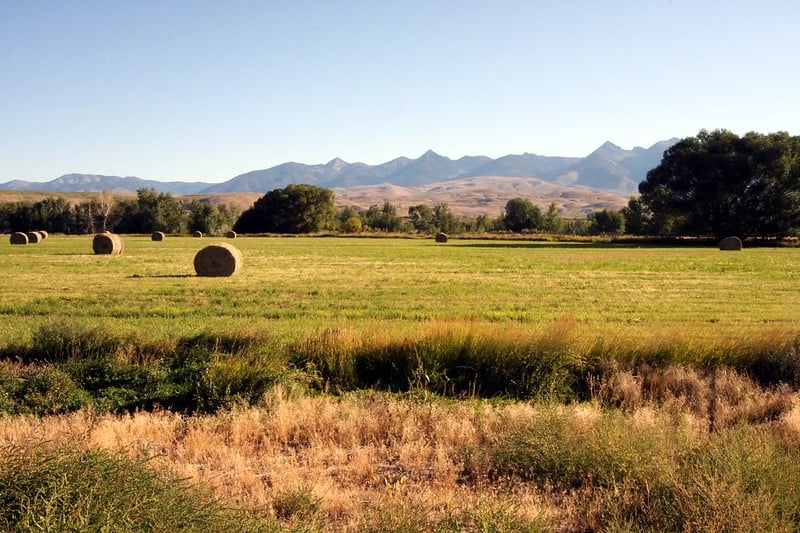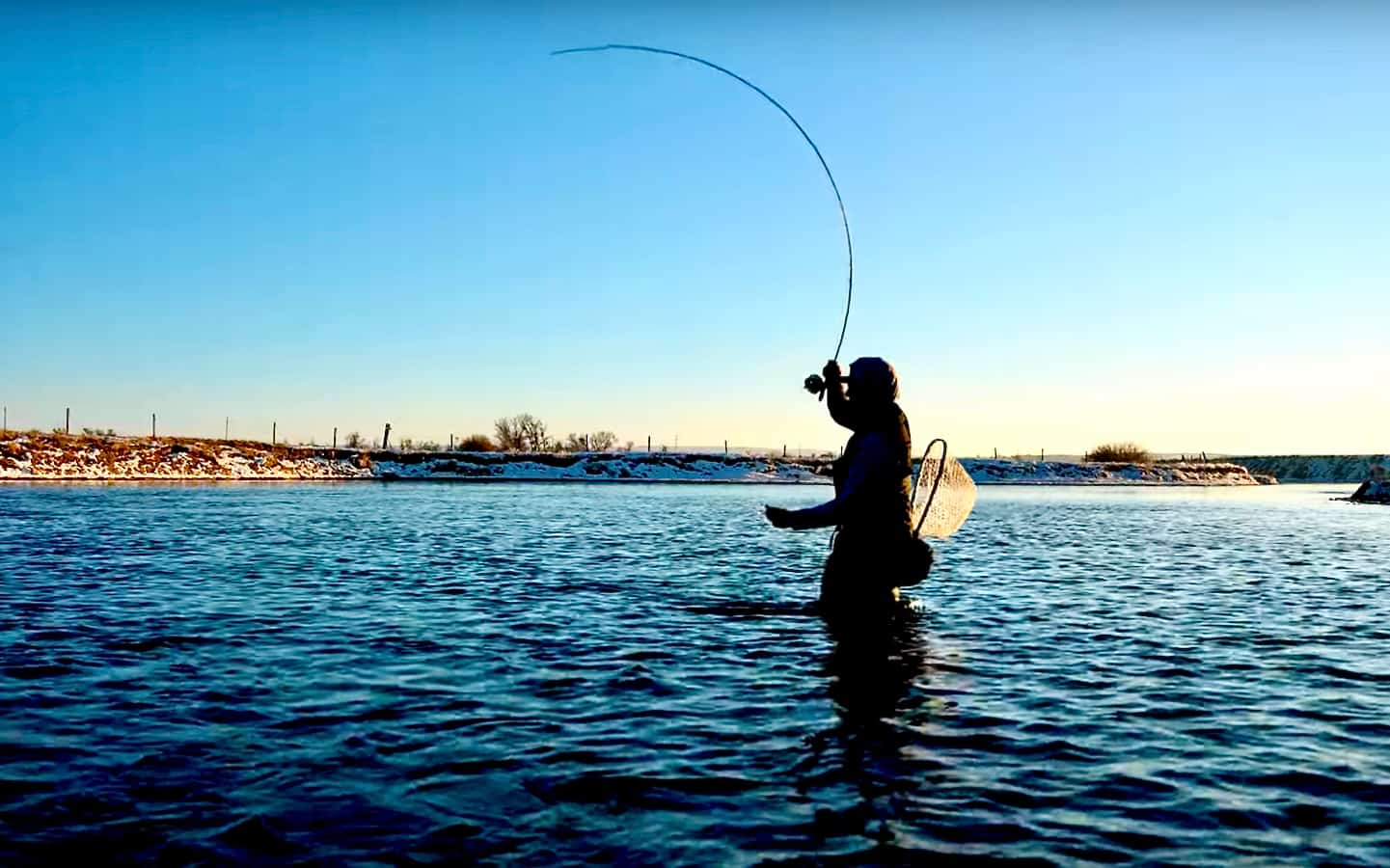Subsurface With Diana Rudolph
MC: What do you have in your pocket when you’re standing on the bow of a skiff?
DR: “Lip balm. Plus I put all the tippets from the tarpon I’ve broken off in my pocket; I don’t know why, I just like to have them at the end of the day. If I’m bonefishing, a tailing fly and a heavier fly. No cell phones, no pliers, no voodoo freaky good luck charms. Although I am quite superstitious. I have special necklaces, I have to wear the same hat, I have to eat the same breakfast. And I always kiss the fly. Especially if I move to a different flat or something, then I kiss it multiple times. And if I tie a fly for somebody, I always kiss it before I give it to them. There certain things that just get you amped up about fishing.”
MC: Why do you fish for world records?
DR: “I like to test the limits of the tackle, I like the finesse involved, and I like to have that experience of fishing with the guides. For women, fly fishing now is like being a man in the 1950s. Any day you can get on the skiff and say ‘Let’s go get that 8 lb. bonefish record.’ Then you can go out and do it. Catching a record can also be very emotional.”
MC: Besides the Hawley, you’ve also won the Women’s World Invitational Tarpon Fly Tournament 4 of the past 6 years. And you’ve placed highly in many others usually dominated by men. Do you ever think of yourself as “carrying the torch” for women, kind of a Danica Patrick of fly fishing?
DR: “I wish there were more women doing this. If I were a guy no one would give a rats ass about me. But it’s a very exciting time for women, there are just so many opportunities. Guys started called me ‘Annika’ [Sorenstam] during the Spring Fly Tournament this year. But the guys really think of me as a fisherman. And I hope as a woman too.”
“I just hope that the women that are in the sport are doing it because they want to do it, not because their husband or boyfriend does it. You have to have the passion. Those are the people who make things happen. It has nothing to do with how good you are.”
“But I’ve had enough of tournaments for a while…. There are lots of new places I want to fish this year, like Australia.”
MC: We understand you like to trout fish as well.
DR: “Yeah, I just bought a house in Paradise Valley, and I’ve fished a lot with [retired guide] Chester Marion up there. John Bailey and Joan Wulff have been incredible friends and teachers. That’s a big part of fishing anywhere, the relationships with people. But as far as the fish go I’ll fish for anything — blue gill, carp — you name it. The only thing I avoid is sea trout.” (laughs)
“If I were a guy no one would give a rats ass about me. But it’s a very exciting time for women, there are just so many opportunities.”
“You know I think they have different styles. I certainly have learned different things from all of them. You fish with someone like Billy and he tends to be more old school, which can be a very successful approach, and you fish with someone like Timmy and you’re doing more experimental stuff. I get something a little different each time. I love Billy because I love the history of it. To me that is so cool, being in a spot and hearing the old stories about what happened there 30 or 40 years ago. Part of it’s just being with someone you enjoy being with, not just how good of a fisherman they are. It’s pretty special. I mean you’re on the boat for 8 hours with them. But some guides are better at bonefishing, some at tarpon fishing, some for permit; they all seem to have a passion for a certain species.”
MC: OK, on to fishing. Do you ascribe to Andy Mill’s techniques for hooking difficult fish: 14-16 ft. leaders and casting 30 to 40 feet in front of the fish?
DR: “This is definitely true, especially when you’re fishing on the ocean side of the Keys. You have to cast usually 50-pound, sometimes 60-pound fluorocarbon shock. I always fish a Monic [clear] line, use small, small flies, 2/0 being the biggest, and I throw an 11-weight line. If I’m fishing 8-pound of course I’m fishing a 10-weight.”
MC: Do you think there’s a big difference between fluoro and mono?
DR: “I don’t know if the fish is not seeing it, but I like the way it gets the fly down to the fish. I also tie some of my flies small and sparse to help get them down to the poons’ level. If there’s too much material, they won’t sink fast enough.”
“As for abrasion resistance, the fish that was 135 pounds, the hook was way inside the fish’s mouth and that was 60 Seaguar. I’ve also heard a lot of good things about Momoi.”
MC: What do you use for tippet material?
DR: “Rio hard mono because it tests consistently. Mason is so inconsistent, and there’s no way I’m going to spend $10 to have IGFA certify an inconsistent spool. I tried Tournament Ande in some of the smaller line classes but the stuff I used broke way below stated strength.”
MC: How do you like to construct your leaders?
DR: “Improved blood knots — 5 and 3 turns on the smaller to larger diameter lines — unless I am tying to a heavy shock and then I’ll use a Huffnagle. My friend Ted Christie from North Carolina has a new knot that is a little barrel knot with half hitches in front of it; it’s some kind of Oregon Inlet deal that is very small profile, even smaller than a Slim Beauty. Ted’s a very fishy guide.”
“For shock to fly I use a Homer Rhodes, a single overhand and then on the second a double. Standard nail knot from fly line to butt. And because I don’t fish the ocean that much I almost always use about a 12-foot leader.”
MC: Sounds like laid-up tarpon fishing is one of your favorites.
DR: “To me, there’s nothing like dirty water and a laid up fish. It’s got to go on a dinner plate, or your’re going to get no reaction or it’s going to spook the fish. Sometimes you have to barely move the fly, sometimes more, but you always have to read the fish.”
MC: Do you have any favorite fly patterns?
“To me, there’s nothing like dirty water and a laid up fish. It’s got to go on a dinner plate, or your’re going to get no reaction or it’s going to spook the fish.”DR: “Right now I have this little fly called a Sparky — like a Phluff Daddy but with pearl sparkle chenille and mono eyes. It’s working really well. It’s got burned mono eyes and I palmer the hackle right up through the chenille. It looks really good in the water. I put a little notch of yellow chenille right in the bend of the hook in front of yellow grizzly tail feathers. Last year it was the Phluff Daddy, which has a spun deer-hair head kind of like a Craig’s Delight, with little bead eyes, hen back collar, soft hackle tail. And I use Merkins for bonefish 75% of the time.”
MC: Any tips on fighting and landing big fish on light tippets?
DR: “I am soooo still learning.” (laughs)
MC: Describe an ideal day of fishing.
DR: “I think it’s mostly about comradery, who I’m sharing the boat with. The solitude is pretty special too, when you’re not surrounded by people. Whatever you’re pursuing, it’s that trembling excitement that comes as you’re searching for fish that gets me going. Nothing to do with catching. It all about what you see. And definitely a cold beer at the end of the day. ”
MC: What’s your most memorable fish?
DR: “My dad, two weeks before he died, ordered a blank to build me a rod. But he never had a chance to do it. So I had friend build it, and the first cast I made with it I caught a permit on fly, my first one.”
“But in terms of pure adrenaline and emotion, there was nothing like catching that big tarpon. If I could I would do it all over again right now. In a heartbeat.”
